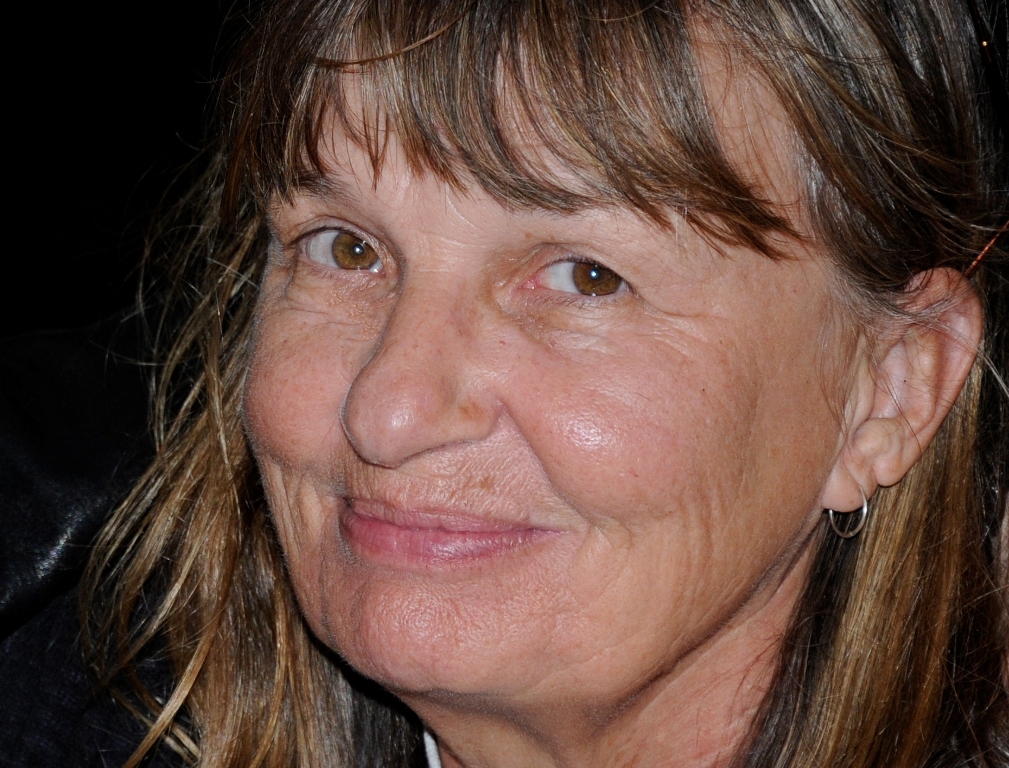Pat Fiske.
After 45 years as a documentary filmmaker, Pat Fiske has some simple advice for aspiring practitioners: “Have many strings to your bow if you want to survive.”
The US-born Fiske credits her multiple roles as a director, writer, producer, sound recordist and stills photographer for helping to sustain her career.
All that, plus she served as a documentary consultant at SBS Independent and was co-head of the documentary department at AFTRS with Mitzi Goldman from 2002 to 2008.
The documentarian will be feted by her peers at an event hosted by the Australian Documentary Forum (OzDox) at the AFTRS Theatre on Wednesday November 13.
OzDox initiated the annual celebration with posthumous salutes to cinematographer Tony Wilson and filmmaker Dennis O’Rourke, followed by the very much alive Martha Ansara and Curtis Levy.
Speakers on the night will include Documentary Australia Foundation CEO Goldman, who says: “Pat is a legend – she’s supported so many, solved problems, connected people, cares deeply and is a great teacher and mentor. She’s an absolute gem with a heart of gold.”
Tom Zubrycki, who met Fiske at the Sydney Filmmakers Co-op in the mid 1970s, observes: “Pat and I have been through the documentary wars together, and I’m sure there’ll be others we’ll need to fight in the foreseeable future. We had to fight every step of the way to get our films shown to wider audiences beyond the cinema.
“In the 1980s the ABC was still making documentaries in-house and it took the corporation some time to source its programs from ‘outside’. Collectively and individually, independent documentary makers fought strenuously for this to happen. The ABC eventually started to acquire our films, but even when they did, the treatment we sometimes received was appalling.”
Director Catherine Scott was partnered with Fiske in Paradigm Pictures, which produced the award-winning films Business Behind Bars, an expose of the prison industries in the US and Australia; Selling Sickness, which examined the global controversy around SSRI anti-depressants; and Scarlet Road, which profiled Australian sex worker Rachel Wotton.
“Pat has been one of the most significant collaborators in my lifetime,” Scott says. “She has been a great mentor to myself and many others in the industry. She really taught me about the importance of creative generosity, to stand back as a director and totally support another younger, emerging filmmaker and give them the trust, belief and freedom to explore their artistic vision and find their voice.”
A former secretary at the NSW branch of the Builders Labourers Federation (BLF), she started making short docus in 1973. Her first feature-length film, Woolloomooloo, co-directed with Denise White and Peter Gailey in 1978, examined events in that Sydney suburb and Victoria Street in Kings Cross in the preceding 10 years when the BLF imposed green bans on historic buildings.
Her 1986 film Rocking the Foundations, which charted the history of the BLF and those green bans, has been digitally restored by the National Film and Sound Archive.
The ABC screened the film on a Sunday afternoon without any publicity or even a listing in the TV guides. “Pat was furious, everyone was,” Zubrycki recalls. “No one at the ABC told her that it was going to be on so she could let others in the community know – especially those who were in the film or had worked on it.”
For All the World to See was a portrait of the famous eye surgeon Professor Fred Hollows, whom she had met in a mountain hut in 1972 while hitchhiking in New Zealand.
“Fred was instrumental in me staying in Australia,” she recalls. “I called him when I reached Sydney, he came and got me, found me a place to live, bought me running shoes, a push bike and I never left.”
Fiske is a member of the Australian Independent Documentary (AID) group, which generally supports Screen Australia’s proposed changes to the documentary funding guidelines, particularly the increases in development funds and the amount allocated for completion funding.
“I think Screen Australia has listened to what producers have been saying, which is encouraging,” she says. “It’s harder to get funding because there is a lot more competition for it and a lot of film school people coming up.
“The ABC and SBS don’t have many slots for documentary, although SBS is trying, so you rarely get pre-sales anymore.”
Currently Fiske’s Bower Bird Films is collaborating with director Ros Horin on Rosemary’s Way (working title), a feature doc on Kenya-born Rosemary Kariuki, who works as a multicultural community liaison officer for the NSW Police Force based in Parramatta.
In her spare time Rosemary organises lunches, dinners and trips so migrant women can meet Australian families, with an emphasis on issues such as domestic violence and women’s rights.
Pat and Ros raised the funds from Screen Australia, the Documentary Australia Foundation and charitable donations.
Martha Ansara met Fiske at the curiously named The Blinky Bill Film Workshop held by the Sydney Filmmakers Co-op at Martha’s house in Glebe. That’s where Pat made her first film, Burstforth, a four-minute compilation of black and white photos of bits of greenery breaking through the concrete streets of Sydney.
“The film attempted to portray the drama of nature struggling to take over the city and did not portend the illustrious cinematic future that lay ahead of its maker,” Ansara says.
“Others might disagree with that statement but if they attend the tribute to Pat on November 13 at AFTRS, they will have a chance to see Burstforth and judge for themselves.”



